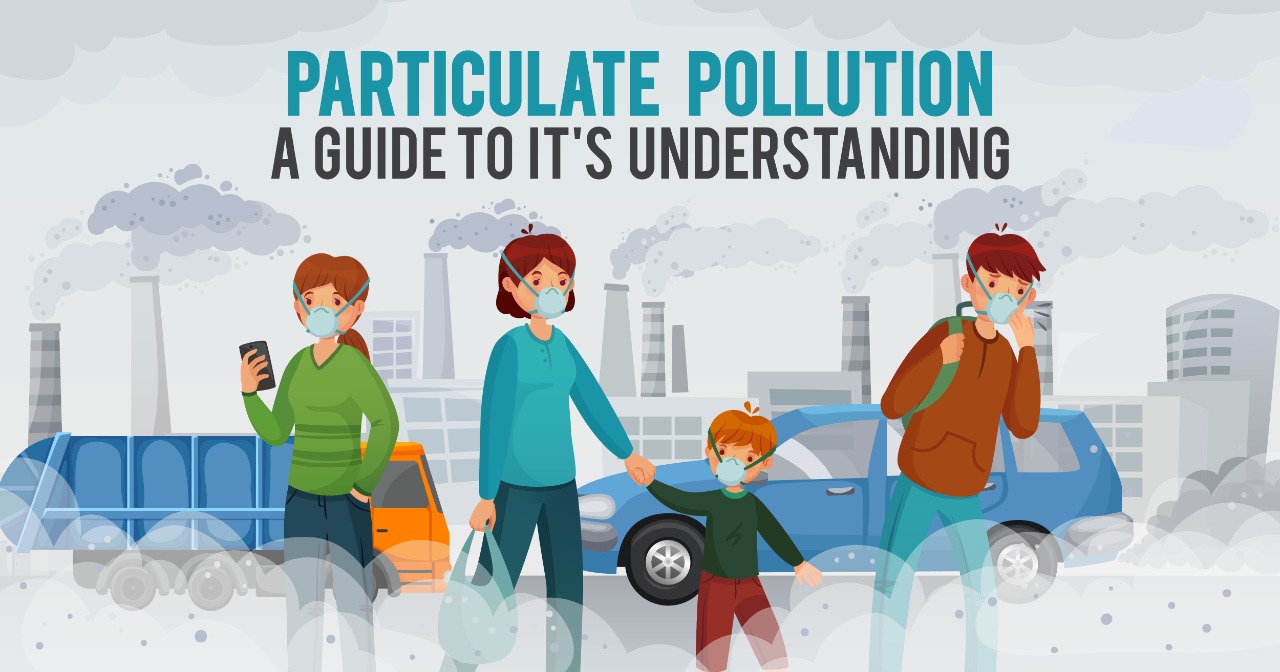We often worry about our diet, exercise routine, and mental peace. And we forget about taking note of things that are physically present in our environment and are damaging us consistently, and because of our negligence and lack of knowledge about it, we are not taking any steps regarding it.
No matter how much we care about our health, nothing will improve if we don’t get serious about it and change it to something much better.
One of the very crucial and dangerous substances present in our surrounding environment is particle pollution.
In this article, we have covered some points to make you understand the said topic from a bigger perspective:
a) What is particulate pollution?
b) What is the root cause of their existence?
c) What are its various forms?
d) How can we reduce it?
What is particulate pollution & what are its various forms?
Have you ever noticed dust, dirt, or dark dingy kind of material floating in the air? This is one kind of particle pollution that can be seen through the naked eye. These are mostly observed while cleaning our homes, at the construction site, or while walking on the road when we face a sudden blow of smoke from vehicles.
However, there is another variety of particle pollution which are only visible through the microscopic lens and indeed they are the most harmful ones.
(i) PM (10)– Coarse particles are the least dangerous ones as their size is not small enough to enter our body and do prominent damage. Bacteria, mold spores, dust, and smoke are some major examples of Coarse particles or PM10.5.
(ii) PM (2.5)– PM10.5 aka fine particles with a diameter of 2.5 or less is capable of harming our health system to a large extent. Fine particles can enter our bloodstream or lungs and cause serious repercussions.
Emissions from power plants, non-electric vehicles, and wildfires are some top sources of fine articles.
(iii) PM (0.1)– The smallest yet most dangerous kind of particulate matter is 0.1. According to the experts, the ultra-fine particles have the full potential to absorb by our body more quickly and pose threats like cardiovascular diseases and oxidative stress.
The reason behind its existence
To find a solution to a particular problem, it is imperative to find out the source of the problem. The same logic applies to the case of particle pollution.
There are two sources of particle pollution – Primary and Secondary sources.
Wood stoves and forest fires are primary sources of particulate pollution while sources that emit pollution in the form of gases are secondary pollutants – power plants, industrial facilities, and vehicles (cars and trucks).
How can we reduce particulate pollution?
As now we are aware of the major sources of pollutants, planning a definite roadmap to reduce pollution is simple. According to the information mentioned above, the major pollutants come from vehicles, power plants, forest fires, and the burning of wood and industrial facilities. Hence, our goal should be to take care of the respective areas by following the steps:
1. Encourage electric vehicles – With zero tailpipe emissions and HEV emission benefits, electric cars and scooters are one of the best means of reducing environmental pollution. Not to forget, it is beneficial for the vehicle owners as they need not take recurrent tours of petrol pumps for fueling their cars or scooters. One needs to plug in your electric vehicle for charging and the rider is all set for the journey. Additionally, expect low maintenance and better performance if you are thinking of an electric vehicle.
2. Shift to nuclear generation – As per the recent news, India is aiming for a carbon-neutral nation by 2070 via the usage of nuclear energy. Nuclear energy is not only beneficial for providing consistent electricity but also for curbing fossil fuel usage. Fossil fuels are said to be one of the biggest culprits when it comes to the emission of harmful particulate matter into the environment.
3. Reduce traffic – We know it is nearly impossible to travel long distances without a car or bus. However, one can take certain steps to reduce traffic.
(i) Walk or use cycles for a long distance
(ii) Try to share cabs or cars when going to work
(iii) Use public transport instead of your vehicle as far as possible
(iv) Some steps by the Government like Delhi Government initiated Odd-Even rule in Delhi, India
4. Cover the roads – Covering roads with gravel will not only reduce accidents but also decrease the pollutants emanating from the open ditch hence safeguarding the environment from PM (10).
5. Keep your house dust free – Your daily habit should comprise dusting, cleaning, and changing bed sheets and cover daily. This reduces the chances of coarse particles floating in the air thus protecting you from diseases and allergies from bacteria and specks of dust respectively.
An Introduction to Renewable Energy
6. Use renewable sources of energy – Last but not least, renewable energies are a one-stop solution for all environmental problems. Be it electricity, metro stations, or water heaters, renewable energy has a way to fulfil all our environmental needs. Solar energy, hydro energy, wind energy, and bioenergy are the most sought-after renewable sources among Indians.
India, for sure, is adopting all measures to curb particulate pollution in the environment. Be it opening a metro station in Delhi running via solar energy or a Biogas plant (Gobar-Dhan plant) in Bhopal encouraging renewable energy and opening more job opportunities to youth, we are improving every day with leaps and bounds.
However, we as responsible citizens of the country should be more aware of the negative effects of using vehicles powered by fossil fuels, appliances that are harmful to ozone layers etc.

Leave a Reply